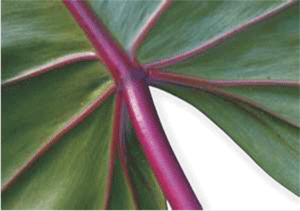The attractive Pygmy Palm
— ideal for landscaping
THE Pygmy Date Palm (Phoenix roebelenii) is related to the edible date palm (Phoenix dactylifera), which, as you might guess from its common name, closely resembles in miniature. The Pygmy Date Palm is a small to medium-sized slender tree, reaching heights of up to eight feet, and is a favourite for landscaping, for small gardens, or even for flower  pots.
pots.
Origins
Phoenix roebelenii is native to the tropical forests of Southeast Asia, in particular Thailand and Burma (now called Myanmar). This little palm is grown around the world indoors and out. It is a popular ornamental plant in tropical to warm temperate areas, including Hawaii, Australia, New Zealand, California, southern Nevada, coastal Texas, Florida, parts of Louisiana, and Arizona.
The stem is covered with old leaf bases, and is topped with a dense head of bright green pinnate leaves that grow to about 4 ft (1.2 m) in length. Delicate leaflets arranged neatly along the upper length of the gently arched leaf stem lend the plant a very graceful aspect. Lower leaflets are modified into sharp, pointed, 2 to 3-inch (5-8 cm) spines. Cream coloured flowers are held on short (1-foot, or 0.3 m) inflorescences, and are followed by small, black dates on the female plants (male flowers are borne on a separate plant).
Small in stature, with delicate, lacy appearance and being easy to care make this an exceptional palm that everyone can enjoy, whether in the landscape or in indoor containers.
Although the Pygmy Palm is single-stemmed, many nurseries where it is grown commercially offer it in containers planted with 3 to 5 specimens. When grouped like this, the stems tend to curve gracefully away from the centre of the clump, creating an especially attractive arrangement.
In Guyana, where many gardens do not have adequate space for trees, the Pygmy Palm is perfect for small gardens, or even in flower pots.
It also looks great by patios and entryways, and even better when combined with evergreen shrubs in a mixed hedge.
Excellent
Pygmy Date Palm excels in containers of all kinds.
This rugged little palm looks great indoors – just give it a bright spot, and keep it out of drafts and away from where someone could brush against the spines on the lower leaflets.
The plant is propagated by seeds which take about three months to germinate.
With respect to planting, local Horticulturist Hans Neher advises that since the ground water level in most parts of the coast is just below surface, it is better to prepare a mound of between 18 inches and two feet to plant the palms. He stressed that if planted on top of water, the Pygmy will not only fail to grow, but will eventually die.
Other information on cultivation of the Pygmy, given by Neher, is that it is adaptable to most soils, but fares better in light, fast draining soils, especially when in containers.
It needs adequate moisture for best look, but has some drought tolerance when mature.
It grows best in bright sun to partial shade, and should be fertilized three times a year.
The attractive Pygmy Date Palm is inexpensive, and is just another one of the exotic plants available at the # 1 Plant Shop (Telephone # 227-8094) in Sheriff Street Georgetown.



.jpg)








